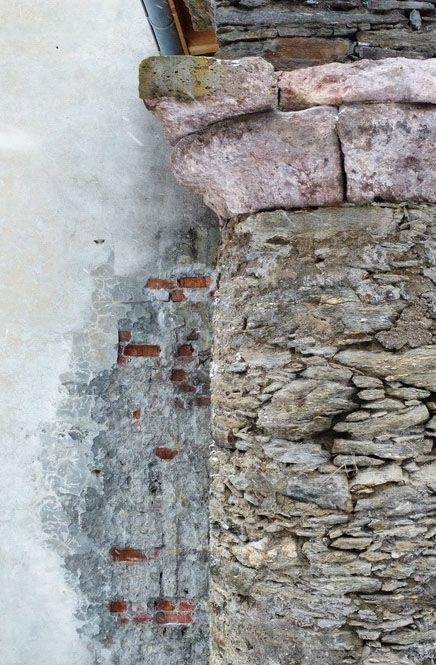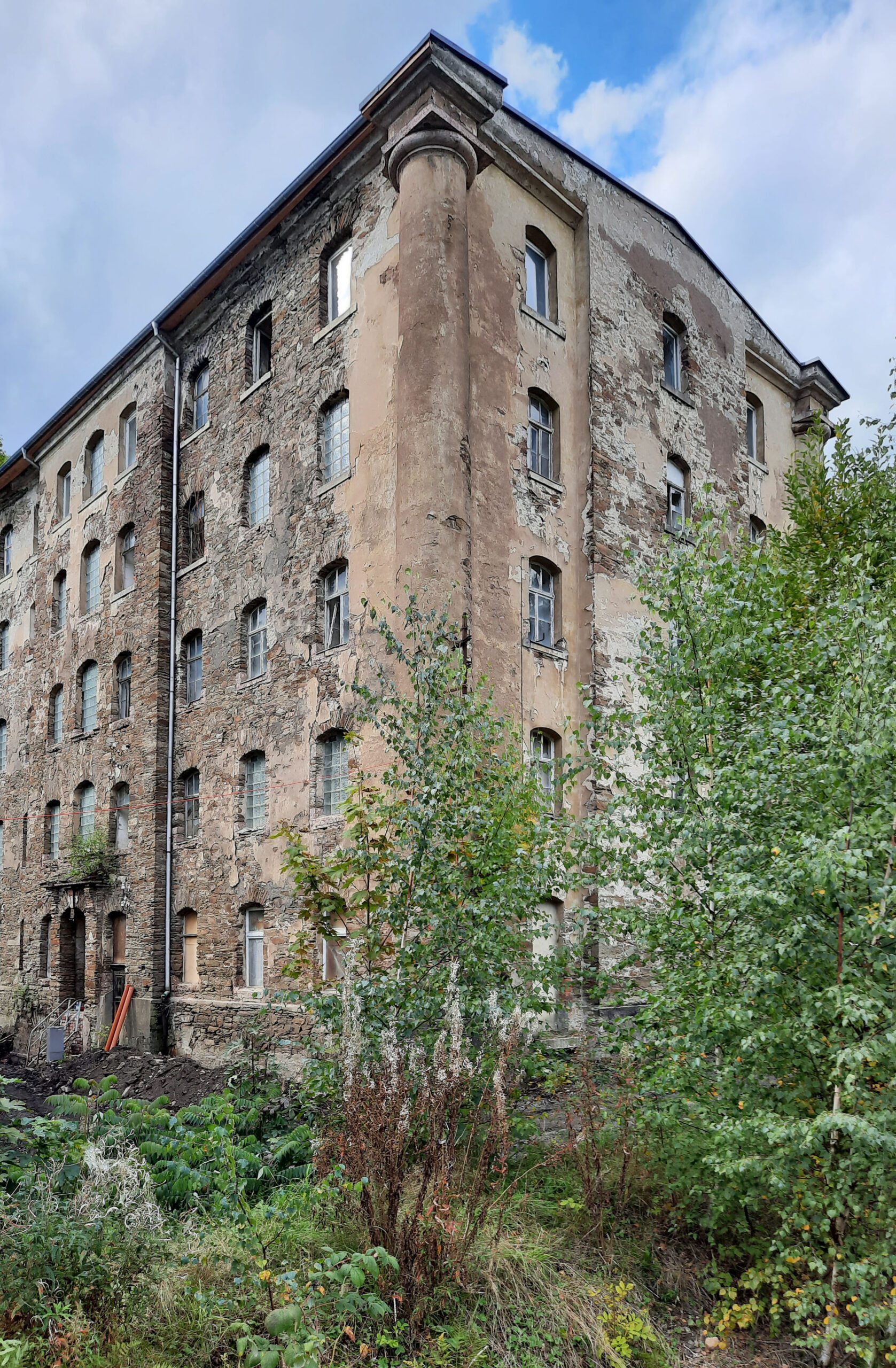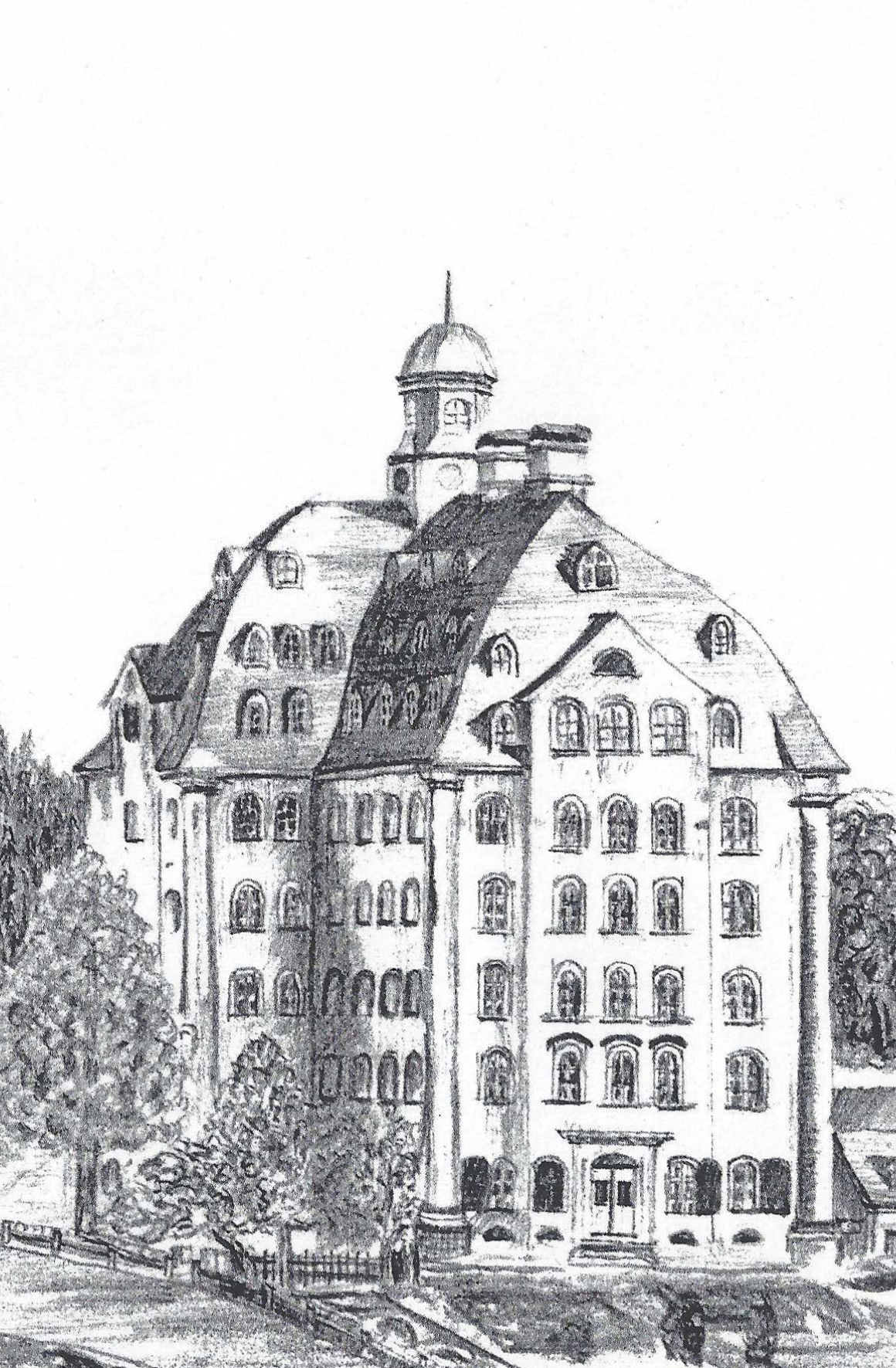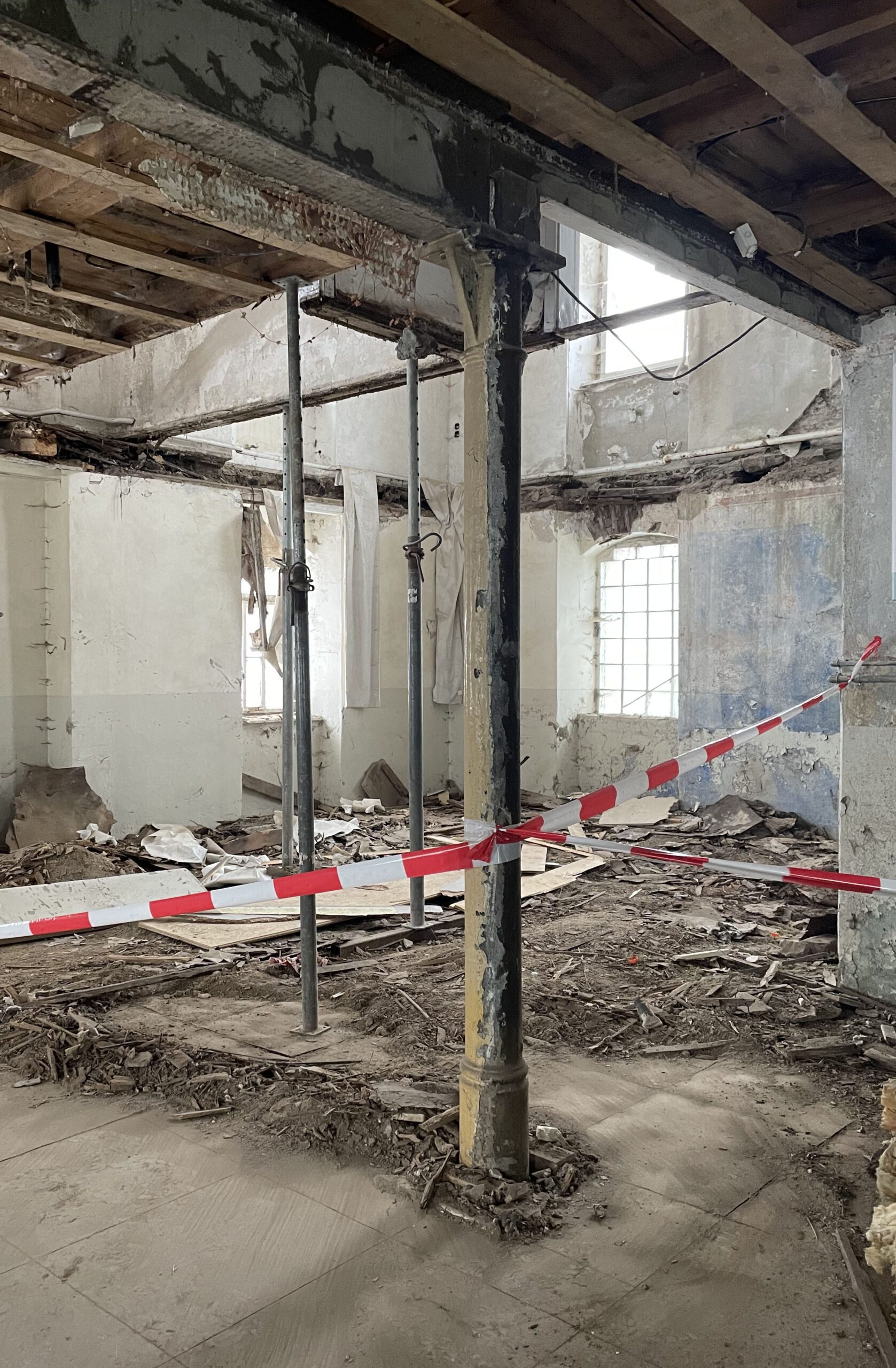After successful completion of the course, students are able to deal creatively with historical buildings, because all design work on protected structures requires specific expertise and appropriate strategies. This course offers students the opportunity to study the manifold requirements that are needed to conserve, restore, renovate and administrate a historic monument.
Spinning Mill - Evan Evans




The English mechanical engineer Evan Evans came to Saxony in 1801, established himself in the following years as the leading textile machinery specialist in the Electorate and supplied many spinning mills in this region with the necessary machine technology. Due to his success and the high demand for new spinning mills, he decided to establish his own factory and had a building erected in Siebenhöfen near Geyer in 1812-15, designed by the master builder Johann Traugott Lohse (1760 - 1836). The new building had a T-shaped ground plan with two wings and five main floors, which were enclosed by colossal columns at the corners of the structure. Another distinctive feature of the building was its voluminous, three-story mansard roof.
After a fire in 1896, the building had to be dismantled: The prominent roof as well as a wing were removed and the ground plan of the spinning mill took the shape of a rectangle. As a result of these changes, the structure lost its original use and was mainly used for storage. This resulted in the addition of a staircase with a loading ramp and a freight elevator in the 1970s.
In 1990, the Evan Evans Spinning Mill lost its last purpose and was left to deteriorate until it was auctioned off. Currently, the heritage-listed building is in a state of disrepair. The new owners of the former factory are therefore looking for new ways to use it to be able to continue to preserve this building as one of the most important testimonies to the industrial and cultural history of Saxony. This is the central task of our design studio in the summer term of 2023. A conversion of the existing building that is compatible with the preservation of historical monuments and sustainable, clever structural additions, and a thoughtful redesign of the exterior should make this possible.
Prize money: The new owners of the historic spinning mill would like to award the best three projects with prize money. The total amount of the prize money is 1500,- Euro.
Excursion: An excursion from March, the 30th to April, the 5th to the Erzgebirge, Saxony will allow us to work on the object. Arrival on 30/03/2023, departure on 05/04/2023; accommodation in the region. Additional excursions and sightseeing are planned. The excursion fee is about €300,- and includes costs for accommodation and excursions. The arrival and departure is to be organized and paid by the students themselves.
Introductory meeting: Thursday 09/03/2023, 10:00 AM; Sem 257
Course dates: every Thursday between 9:00 AM and 02:00 PM, Sem 257 or online
Application via application pool on TISS.
Application procedure: a letter of motivation (approx. half a DIN A4 page) as a part of the portfolio or by e-mail to dimitri.loos@tuwien.ac.at
This design studio is linked to the course 251.811